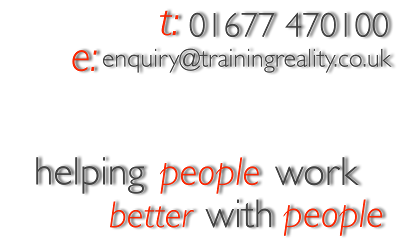Please press (at least!) one of these.
It costs you nothing, and (possibly) helps us spread the word!
Your “reason for being”
Tuesday, 15 January 2013
When helping teams and organisations to communicate, develop or change their strategies, we often use examples of organisations who have failed in one of those three aspects in order to hammer home the point that this really is real; organisations can’t stand still and expect to survive. This is not a new thing; the pace of change may be increasing, and we might be in a particularly challenging period right now, but organisations have always failed - it’s nothing new. The question we all face in our own organisations is how to ensure we’re in the minority who survive in the long term.
The economic historian Leslie Hannah looked back to 1912 and began an exercise in tracing the fortunes of the largest companies in the world. 3 of the top ten back then are still in the top 100 today; the rest are either outside the top 100 or simply no longer exist. More recently, in In Search of Excellence”, Tom Peters and Robert Waterman from McKinsey identified 43 “excellent” companies as part of a project to unlock the secrets of business sucess; two years later, nearly a third of the 43 were in serious financial difficulty.
Only last week, we were using Jessops as an example of organisations who had failed to adapt; this week, HMV will be added to the list. In the very recent past, we’ve had a list including the very well known names of Comet, JJB Sports, Clinton Cards, Game, Borders, Barratts, T J Hughes, Jane Norman, Habitat, Focus DIY, Oddbins, Sofa Workshop, Allied Carpets, Woolworths, and MFI. We believe that, at the heart of the problems that all of these organisations have faced is a self-centric approach to their business, rather than a customer-centric one.
We work with a number of clients who have something in common with all of the failed organisations above: clients who need customers to physically move; to leave their laptops and smartphones and travel to a store. The smartest ones are putting huge amounts of effort into understanding the behavioural drivers of their customers - what is it that will make them leave the comfort of their sofa to visit a physical store?
We call the the reason for being. To get people to come to you, online or in the real world, it’s essential to have a truly compelling reason for people to act, and a truly compelling way of communicating that reason. Examples of organisations that do it well are useful to look at; common ones used are Apple, Nike, Disney, Hamleys. However, whilst there is a lot to learn from these examples, they all have something else in common - they’re at the premium end of the market. A far greater challenge is faced by the more mass market organisations - how do they create the compelling reason to visit?
The answer doesn’t have to lie in premium locations, in premium products, or in premium shop-fittings. Far more powerfully, it can lie in a premium customer experience delivered by the most important people in your retail-style business - those who are in direct contact with your customers, on the front-line. The guy on the till; the girl on the shop floor; the receptionist, the call centre worker, the salesperson, the engineer and the customer care team. These, and many more, are your reasons for being; the reasons why customers will, or won’t, bother to make the effort to switch off from Amazon, from eBay and from other online competitors and come to see you.
Make sure that one of your resolutions for 2013 is to identify how use can use your people to communicate your compelling reason for being. Be on the list of survivors, not the other list. It’s a better place to be.
Please press (at least!) one of these.
It costs you nothing, and (possibly) helps us spread the word!





